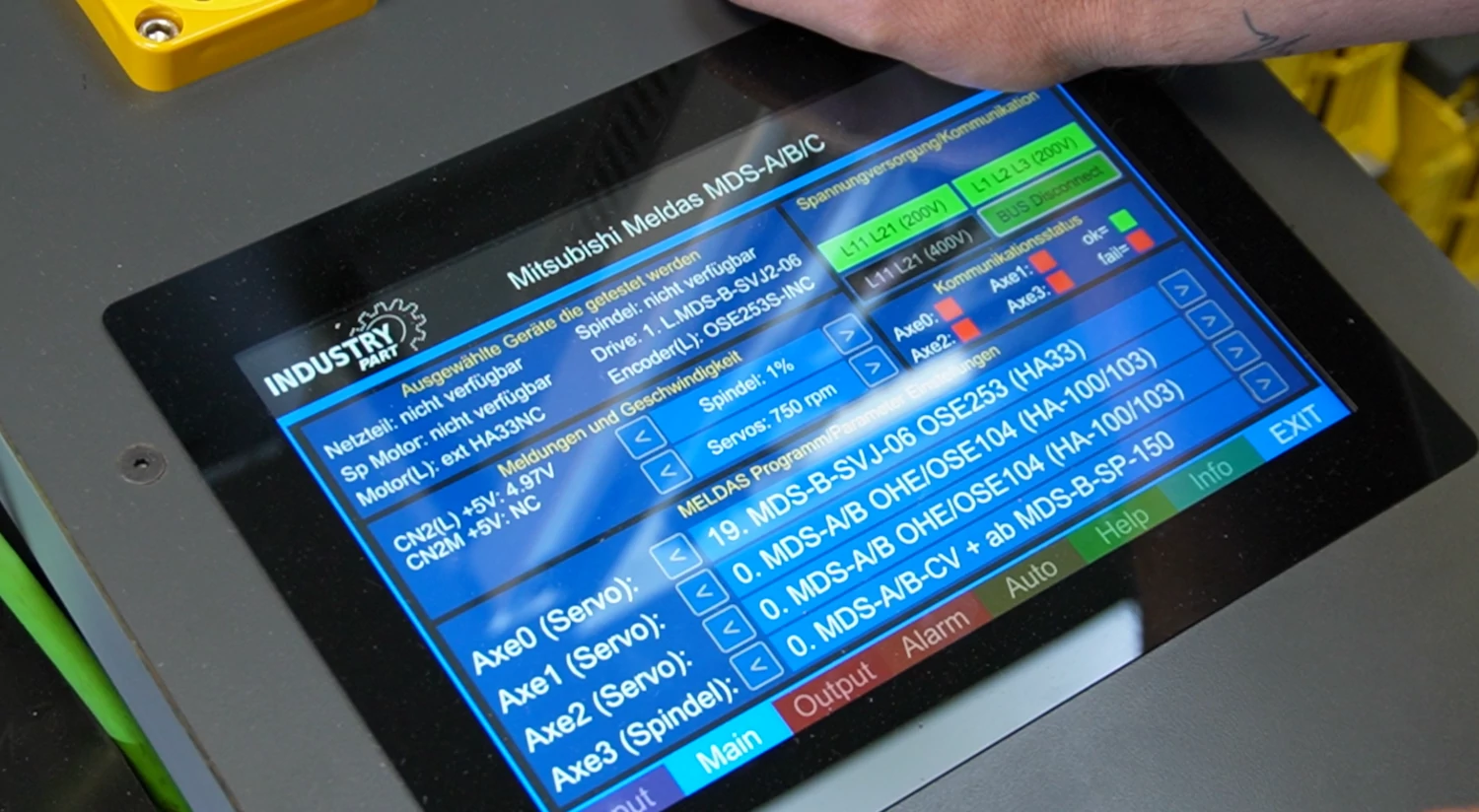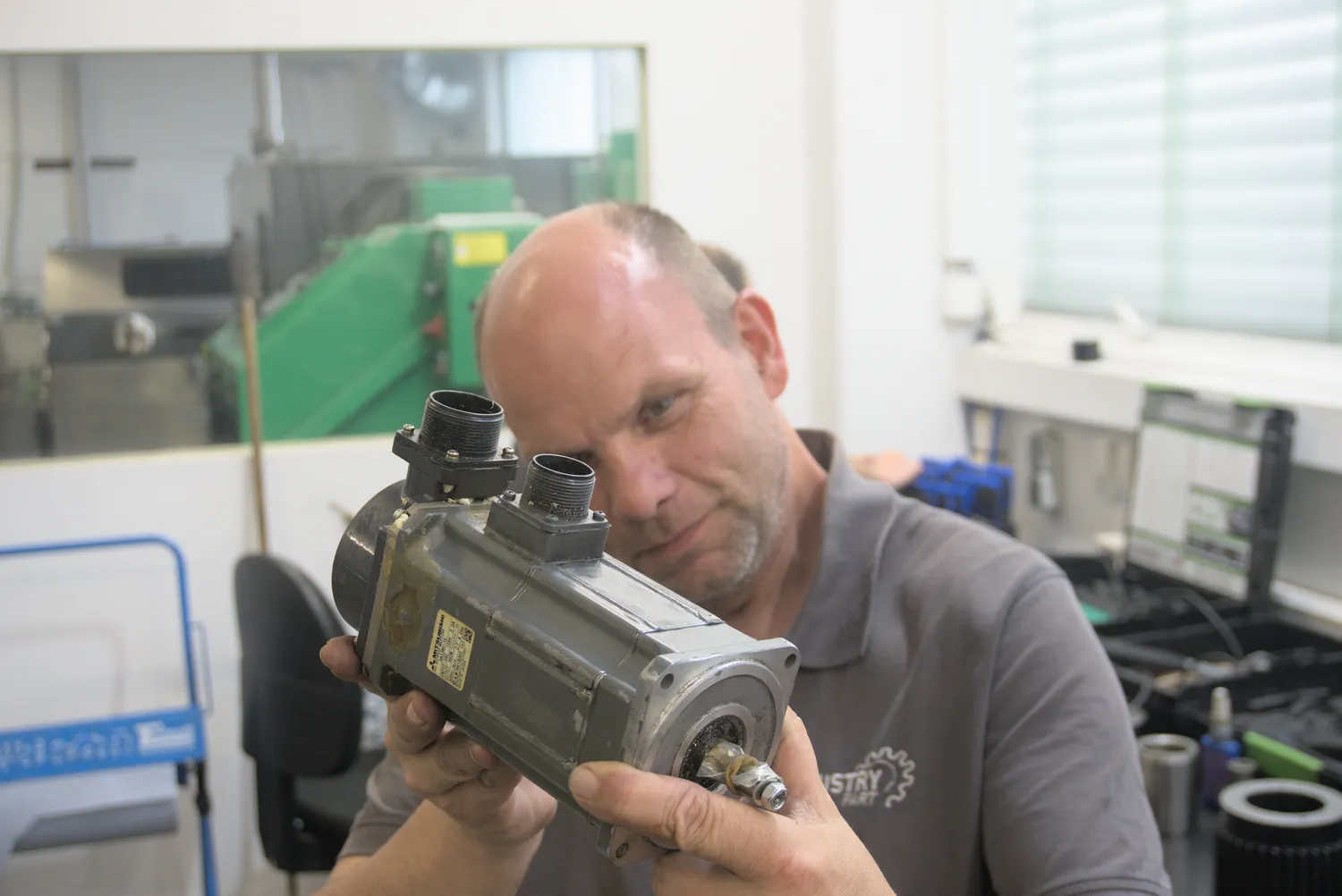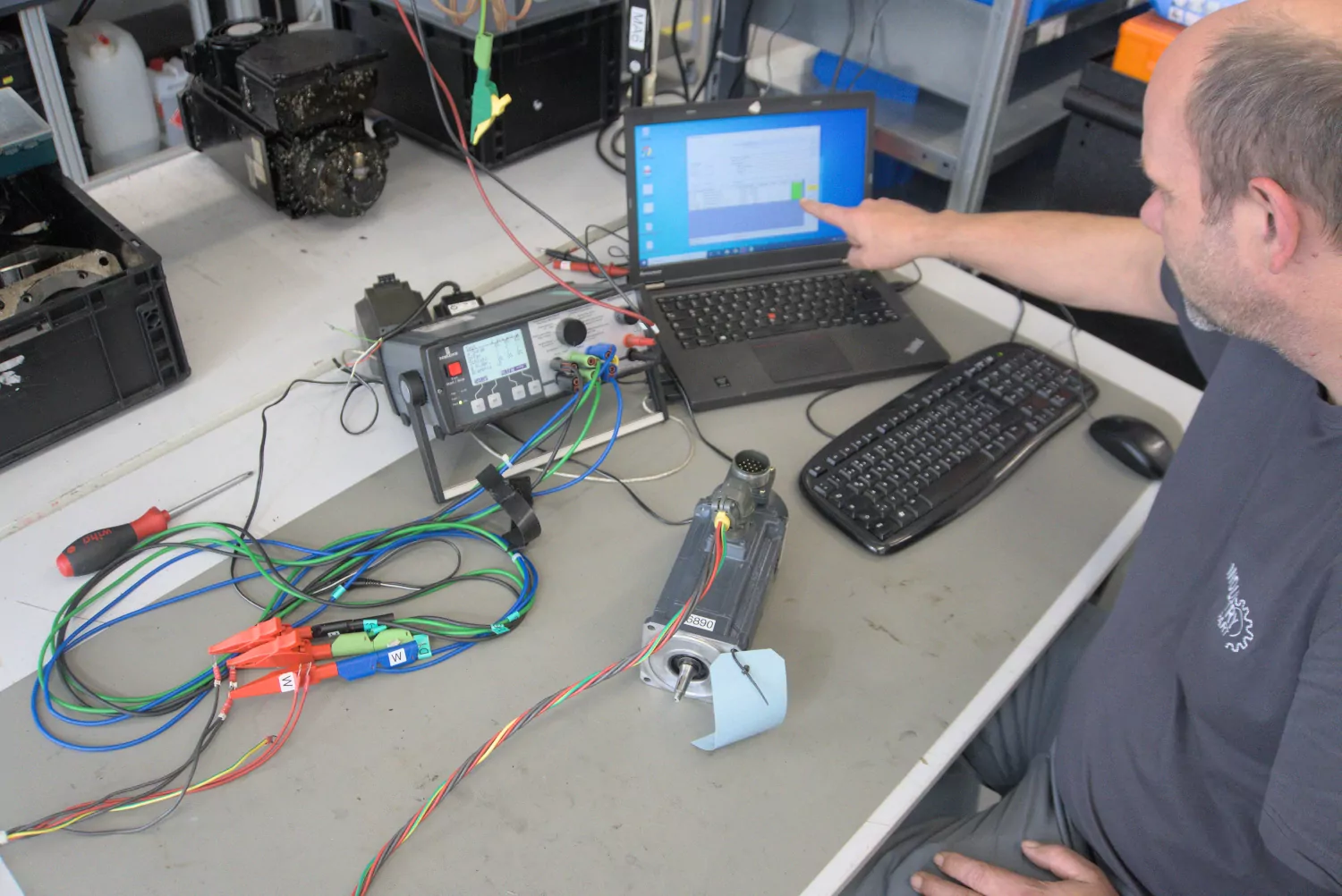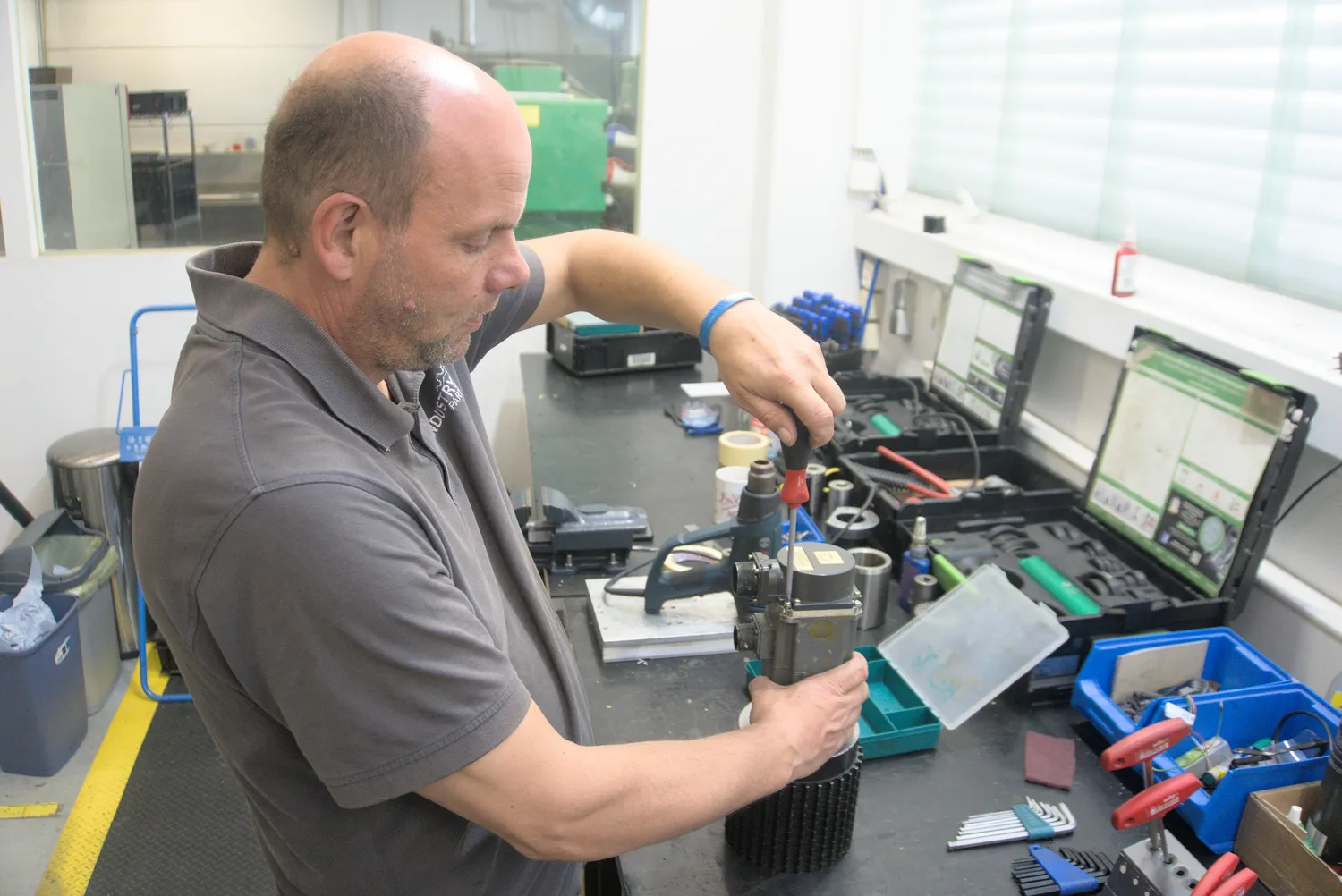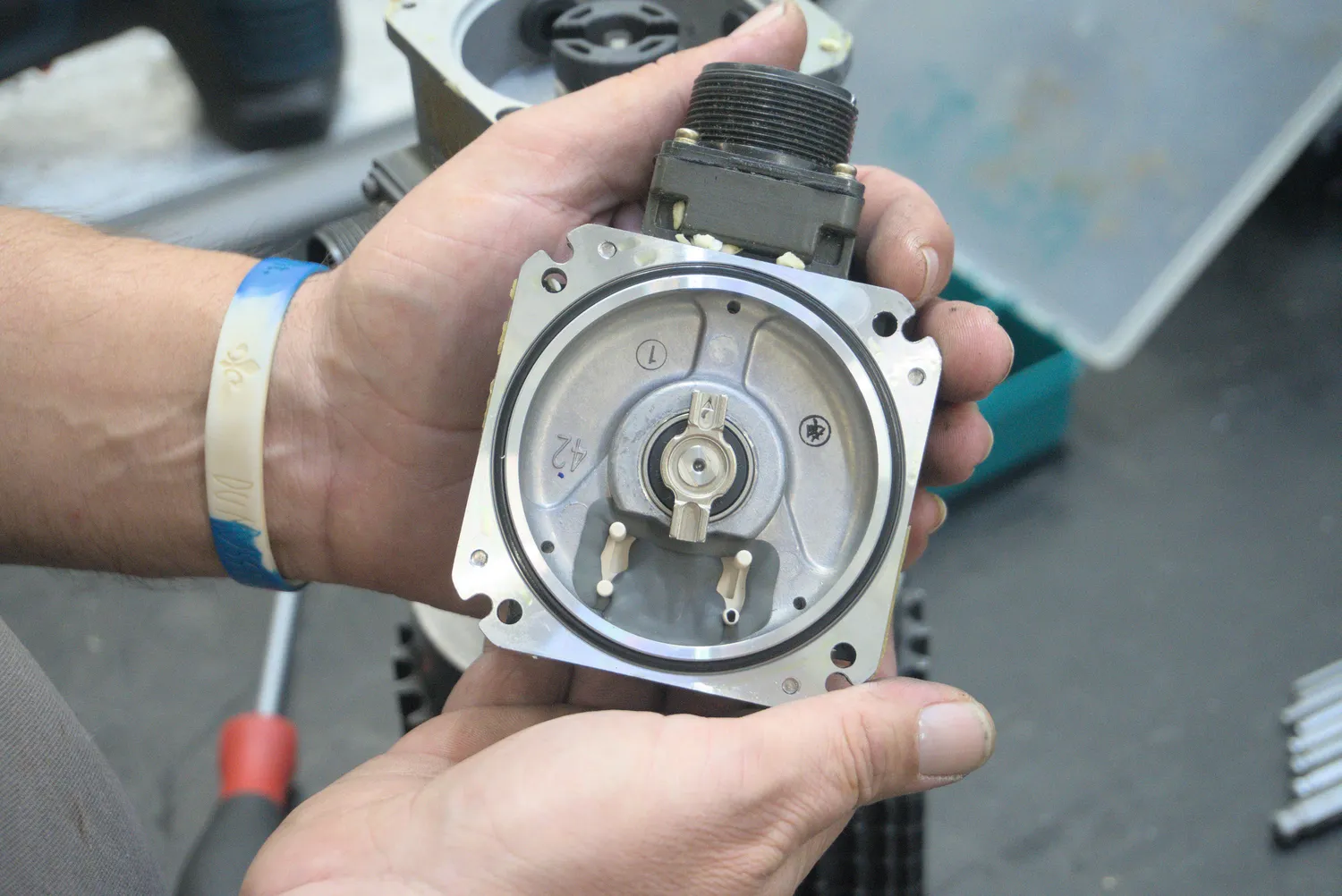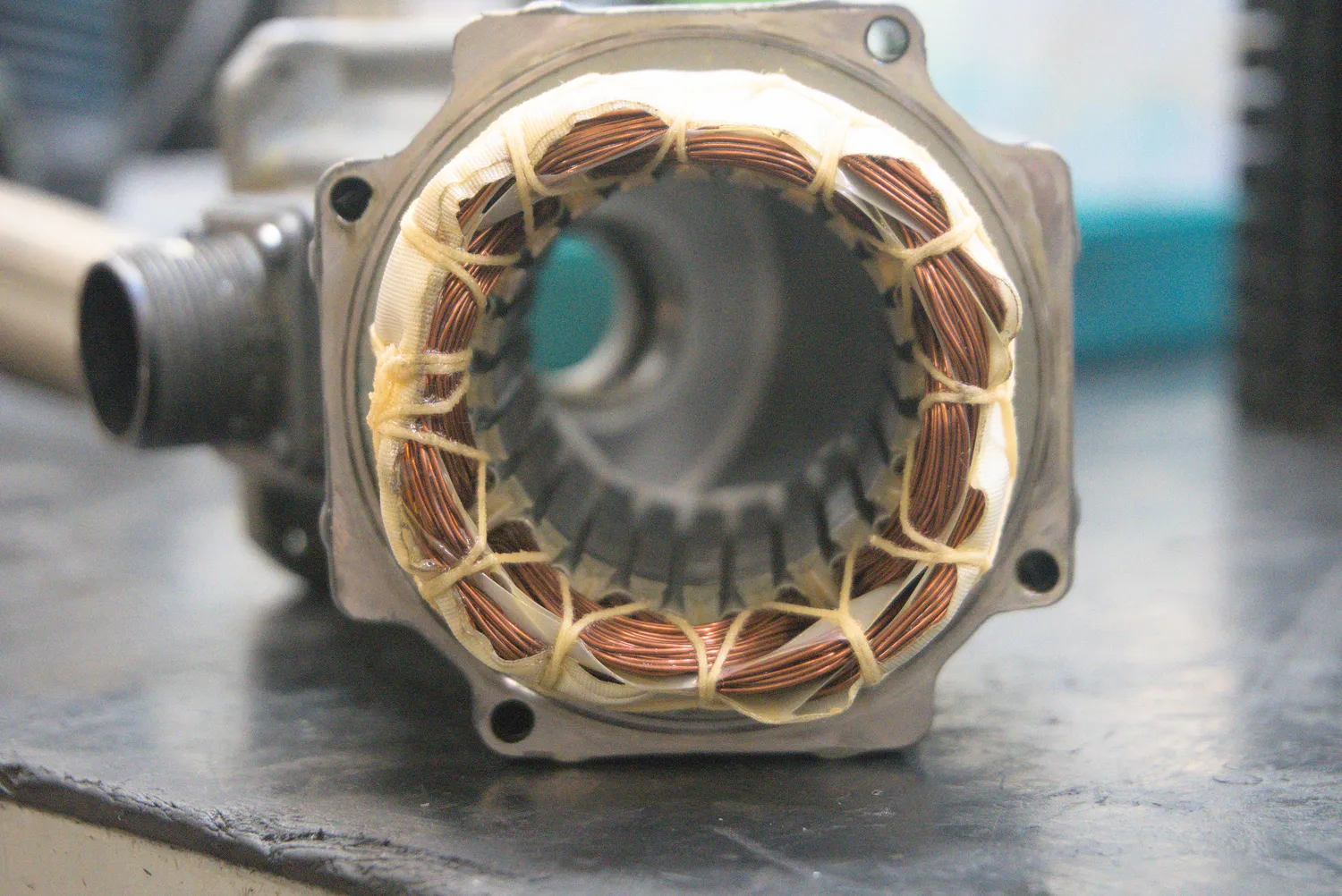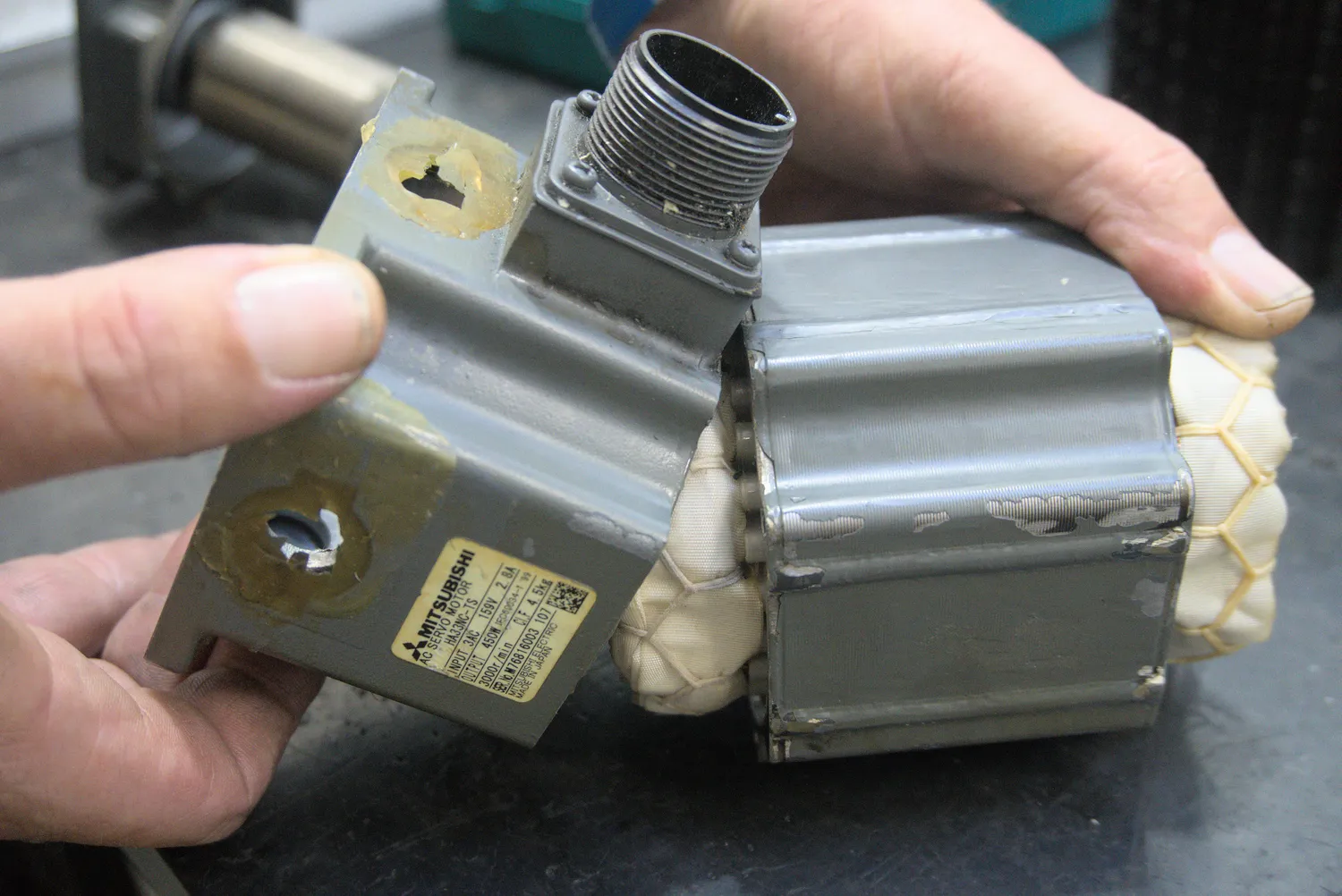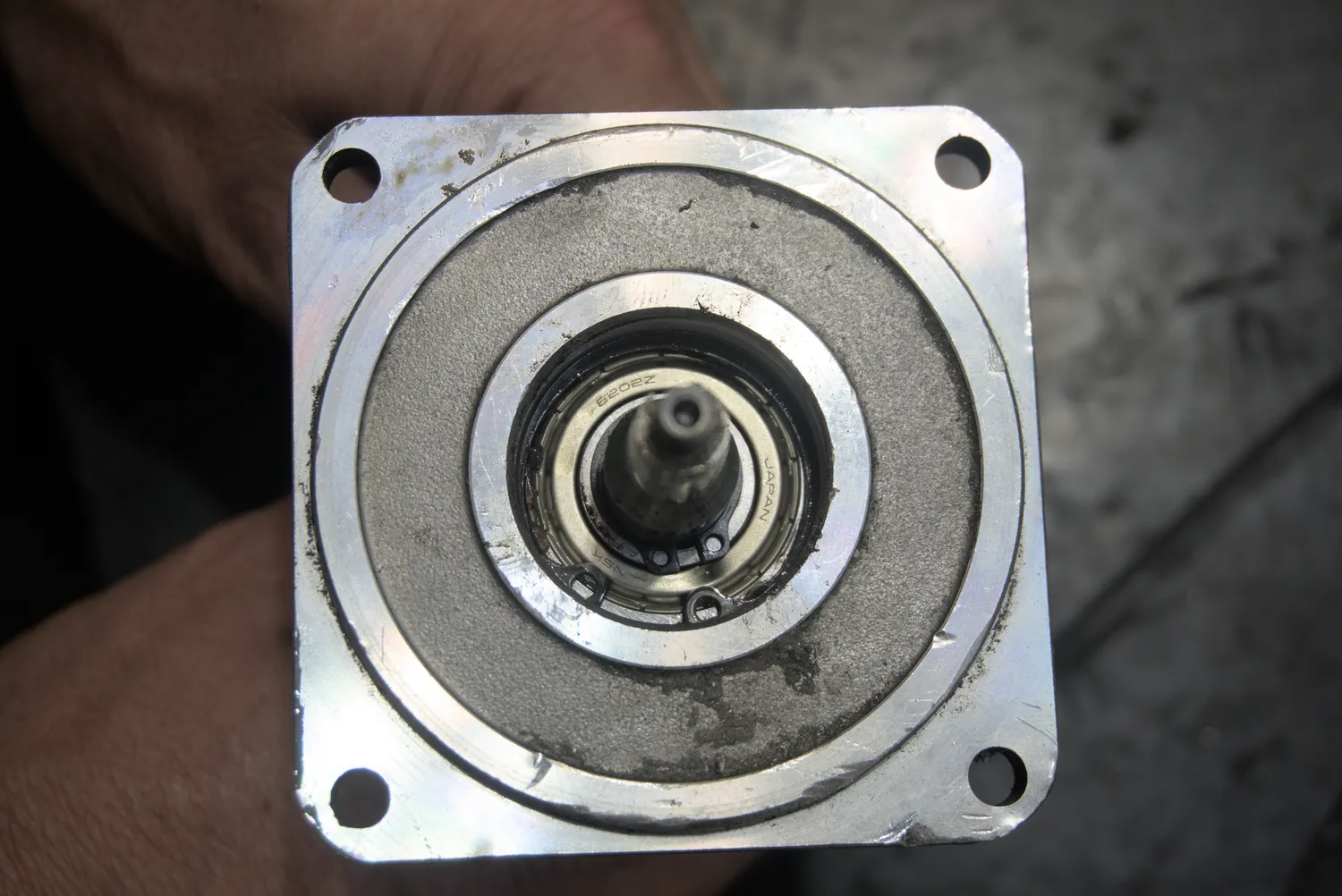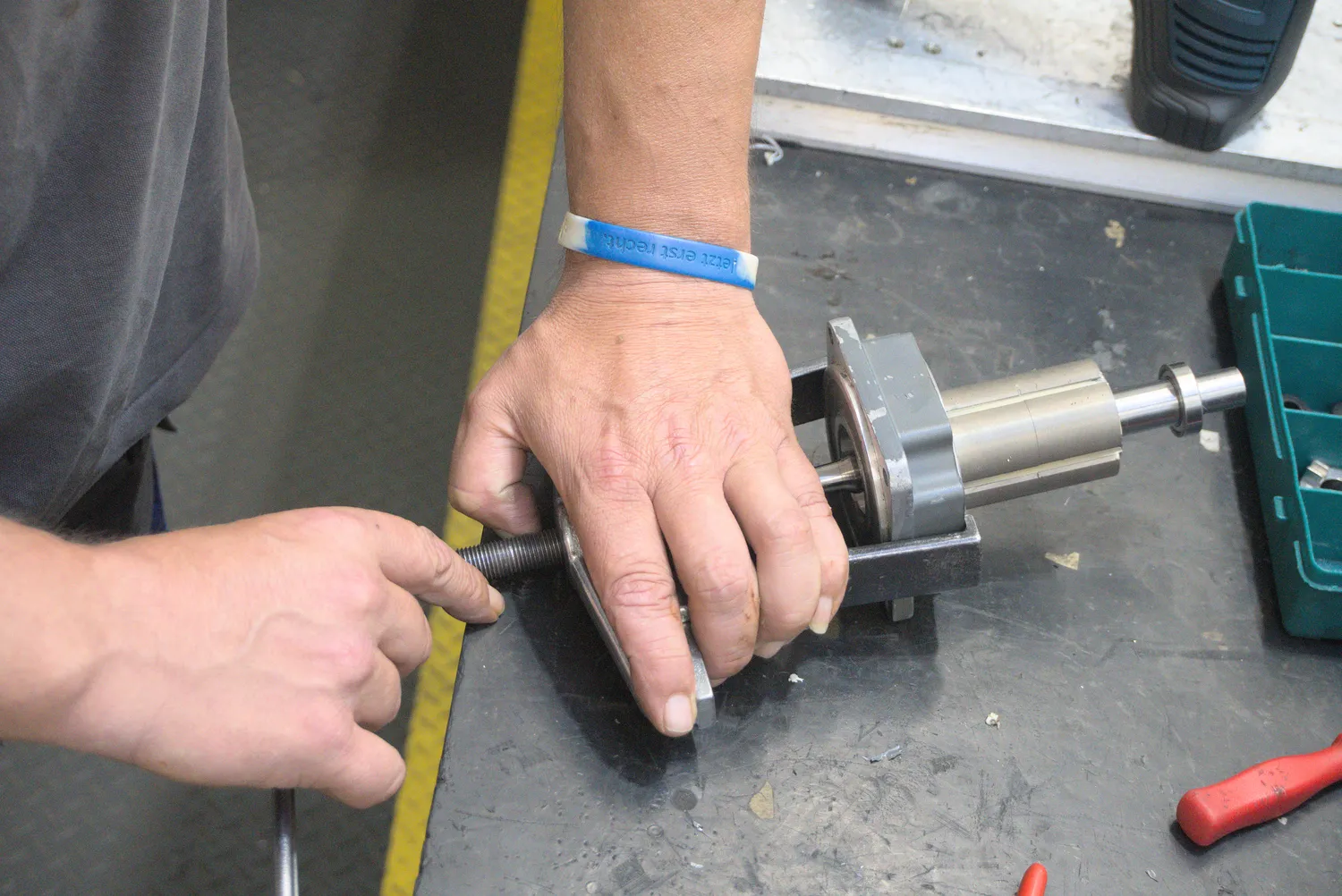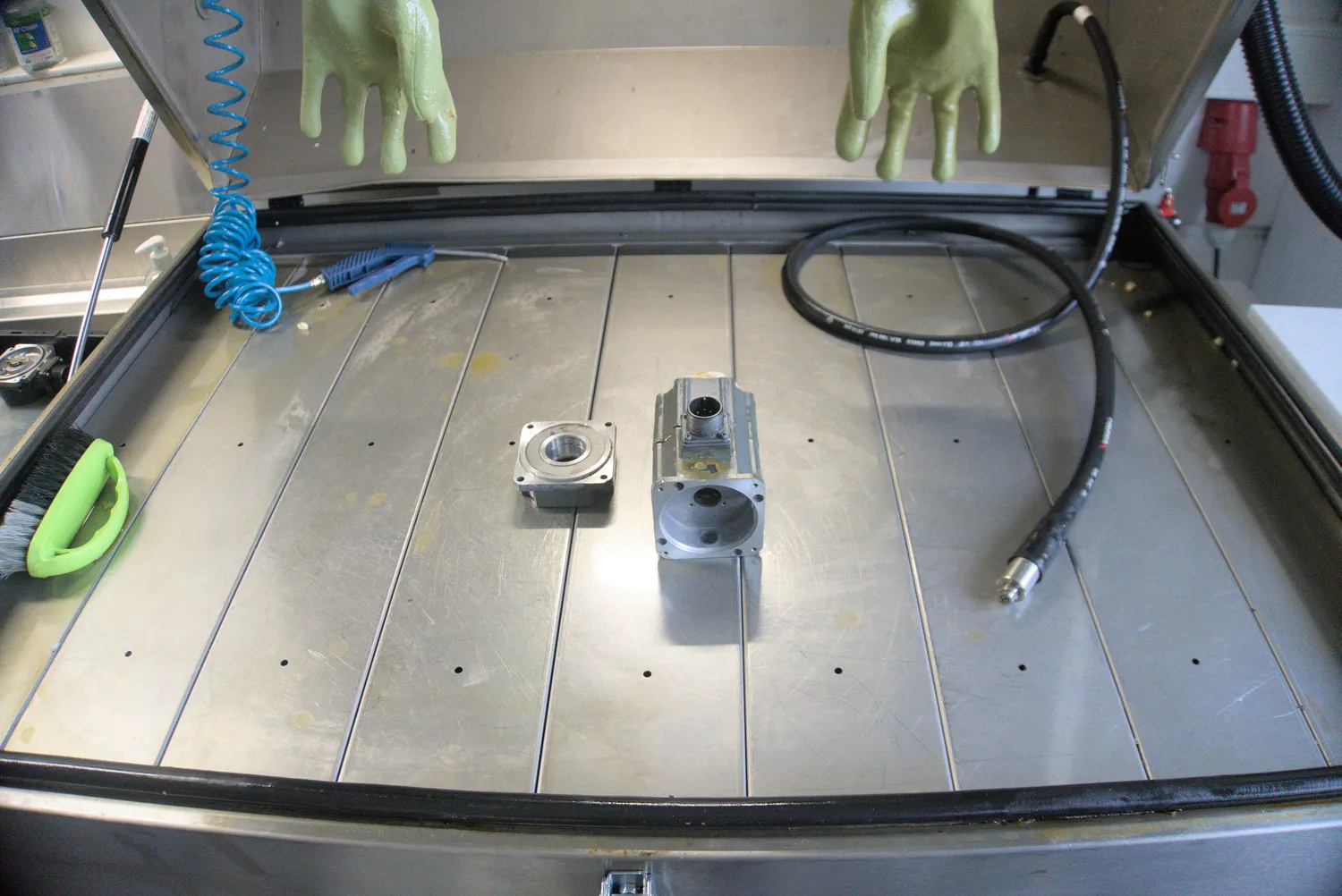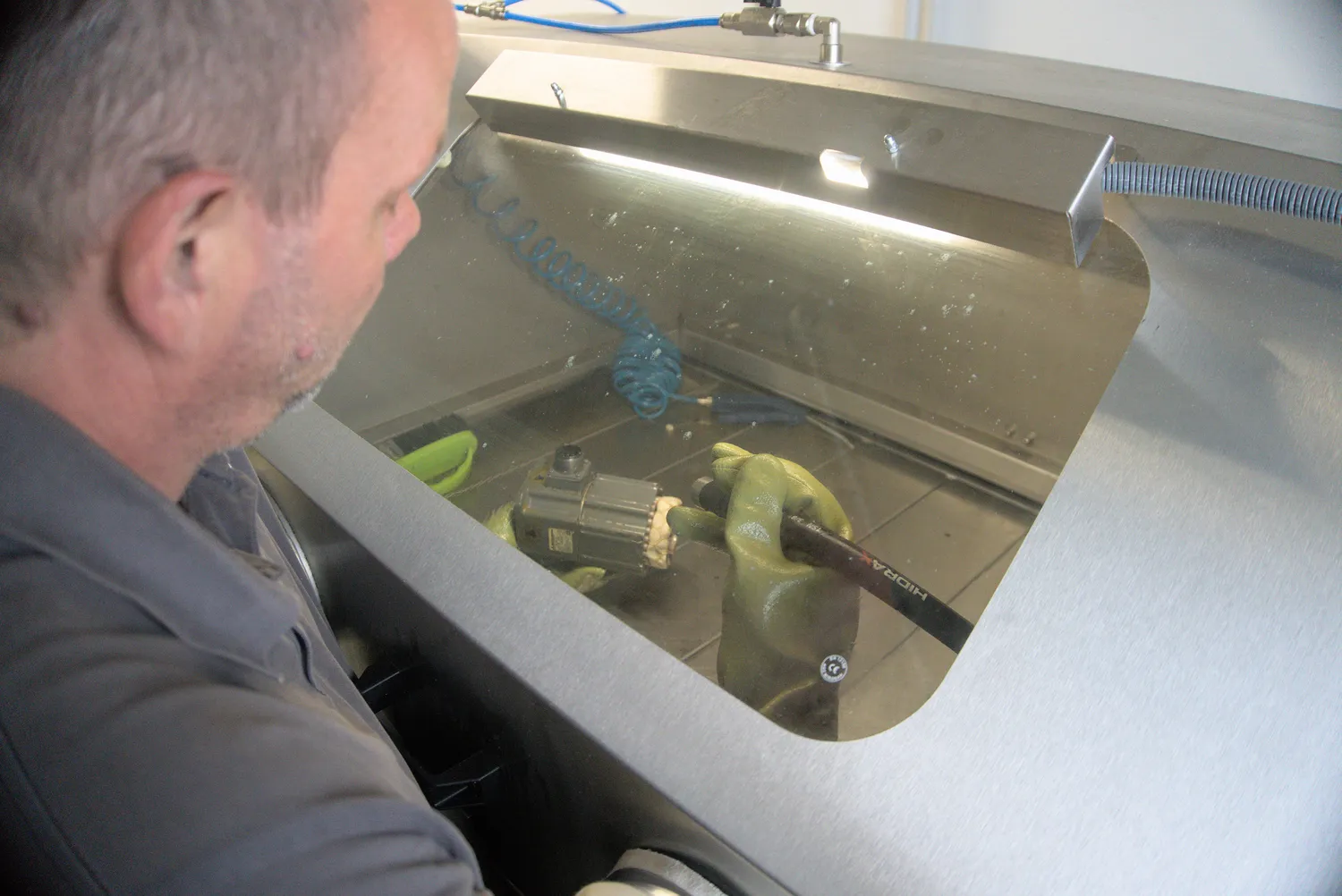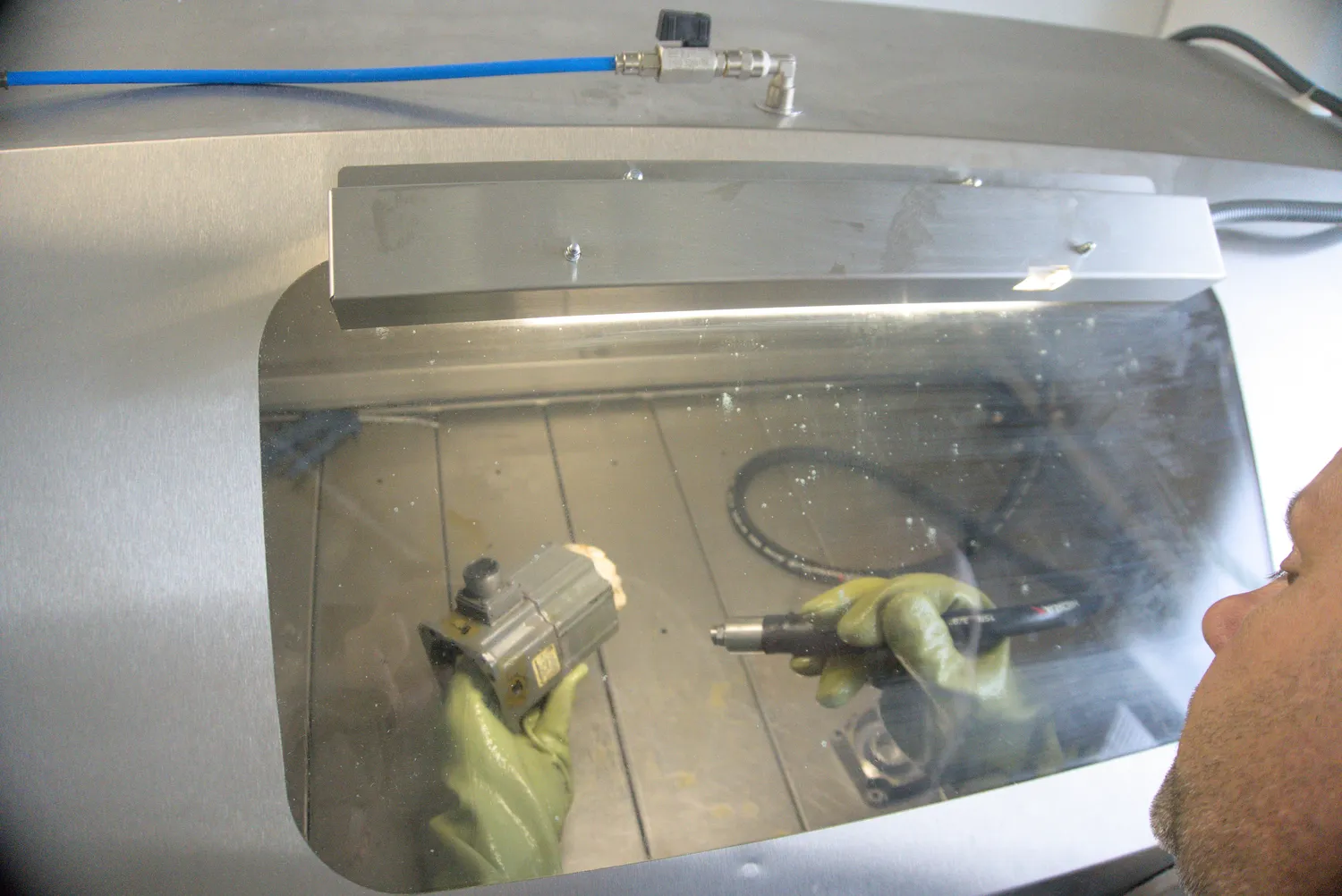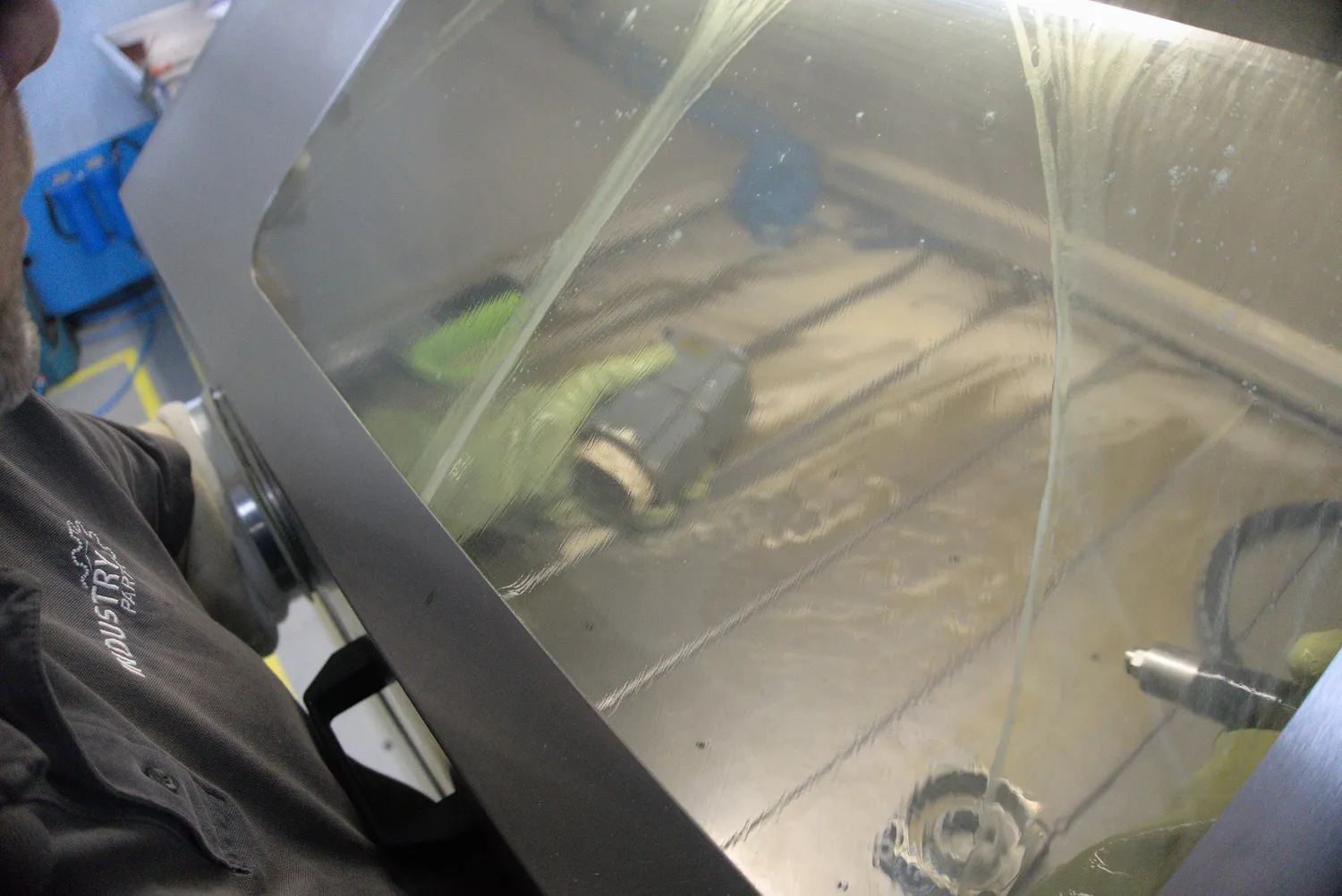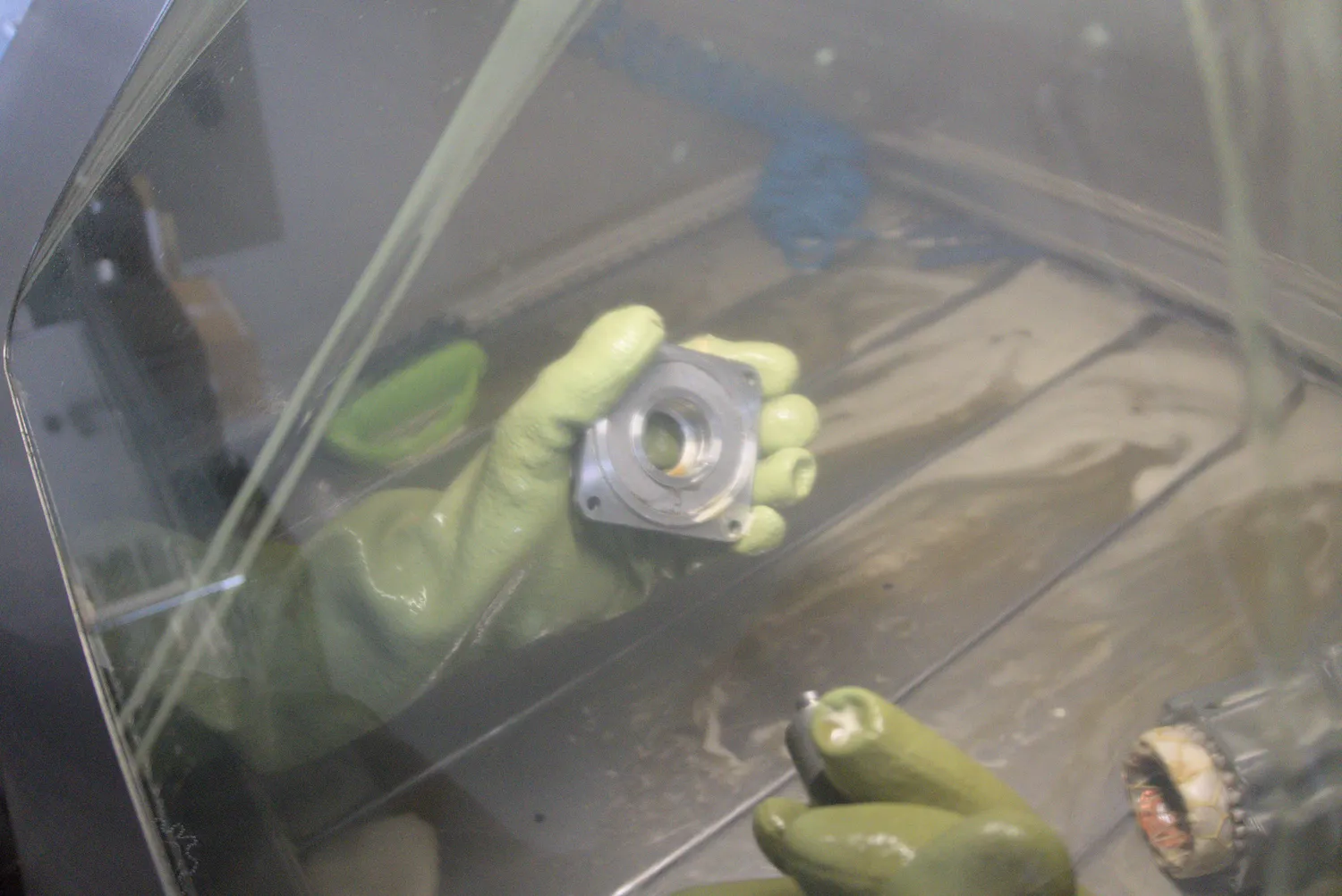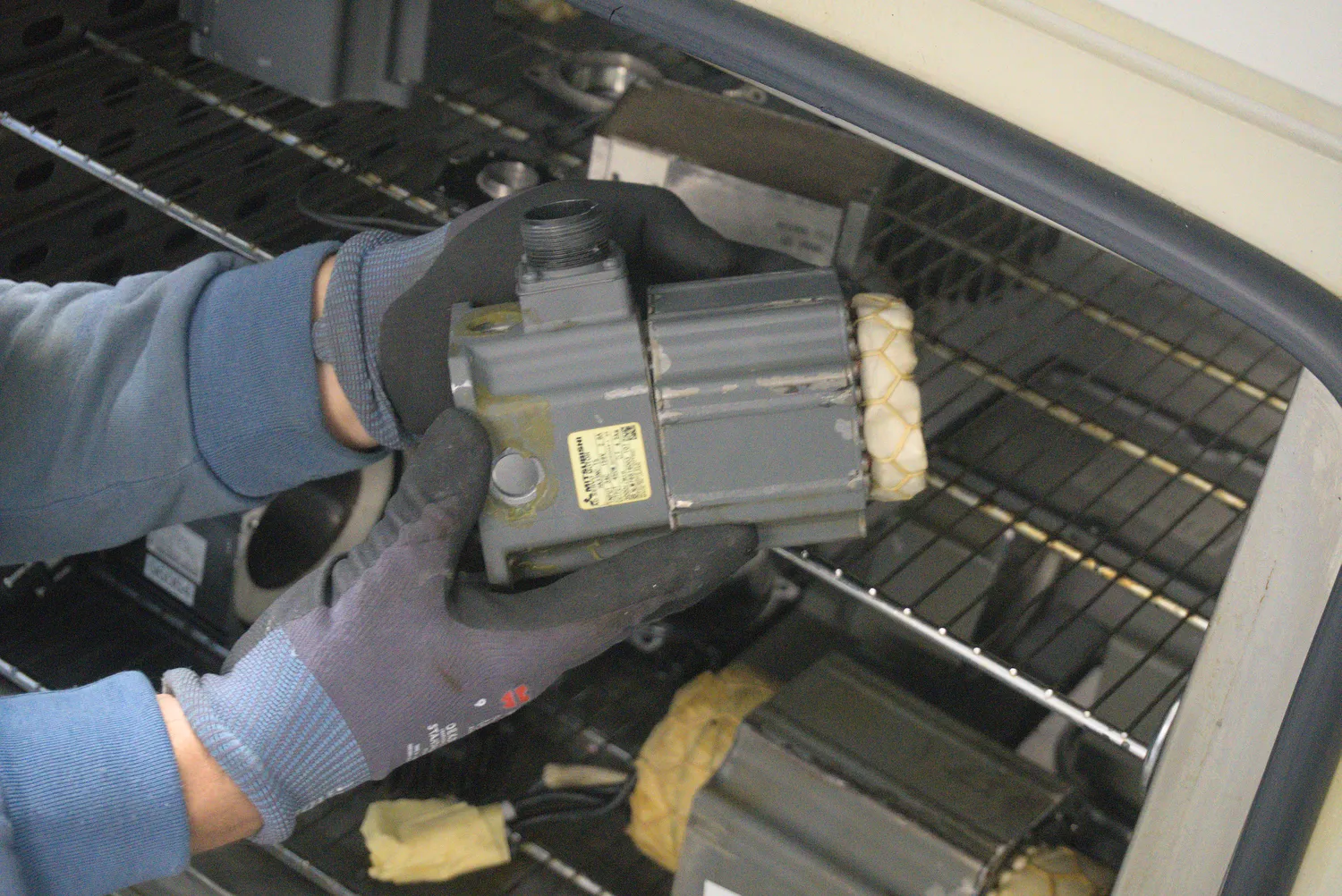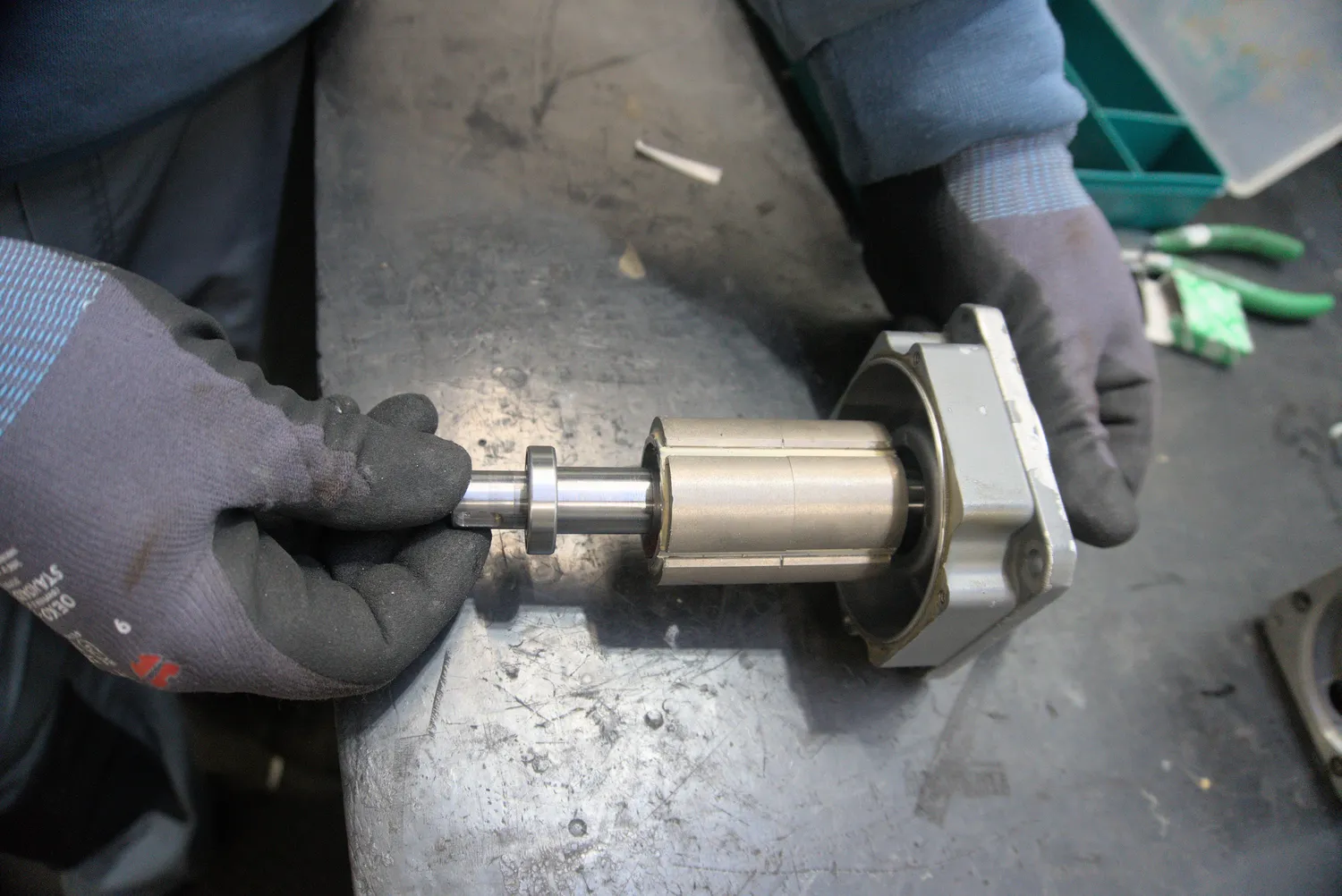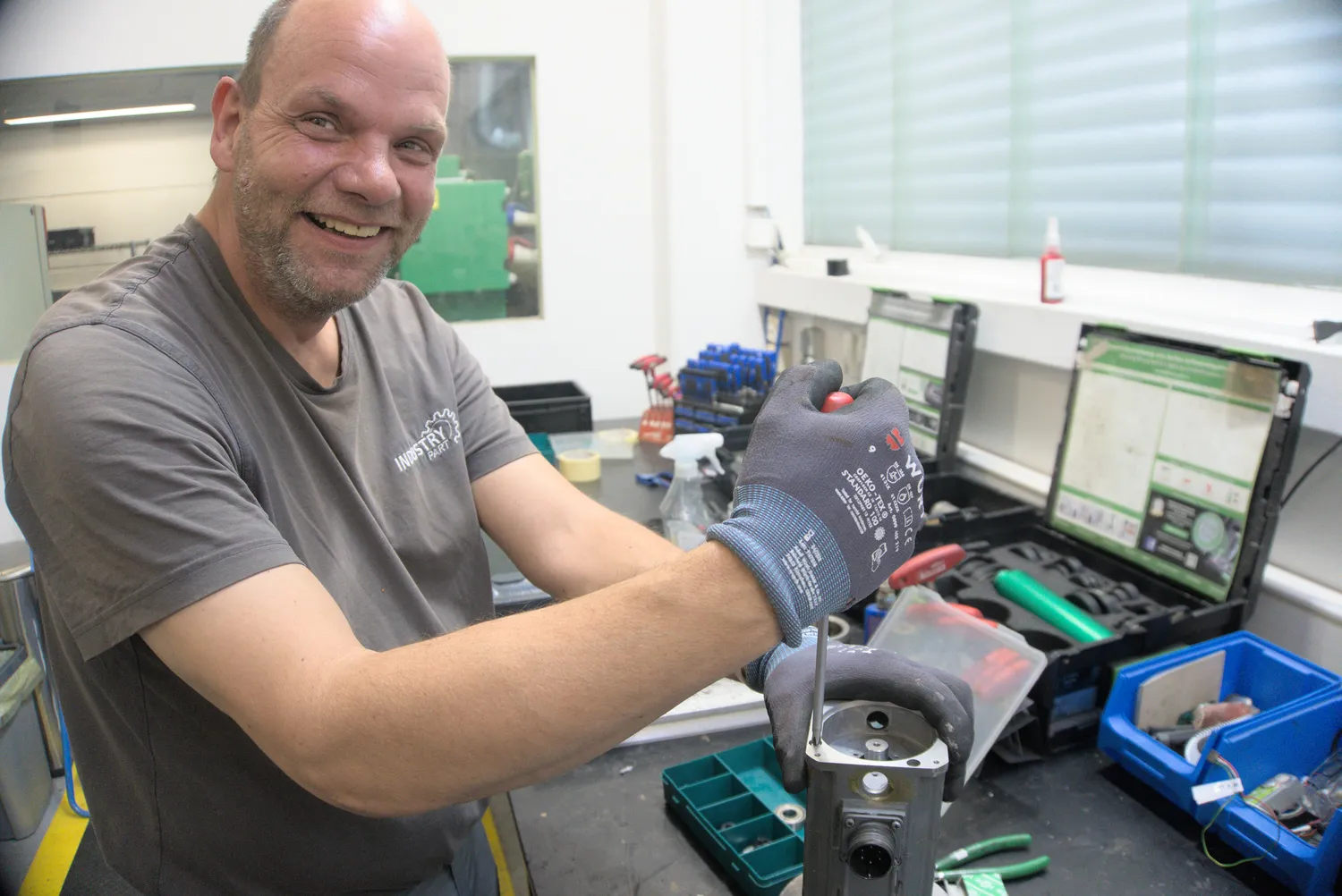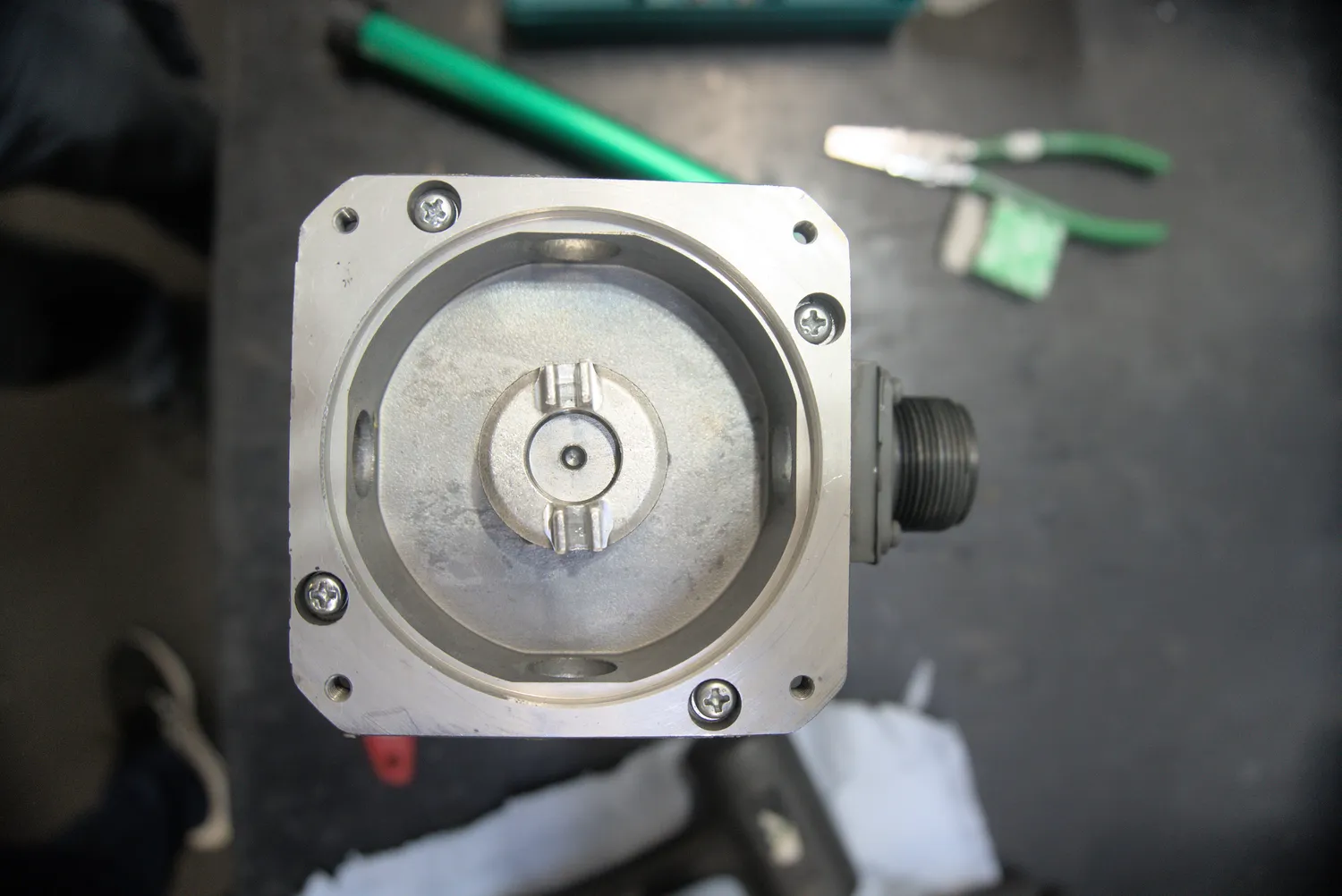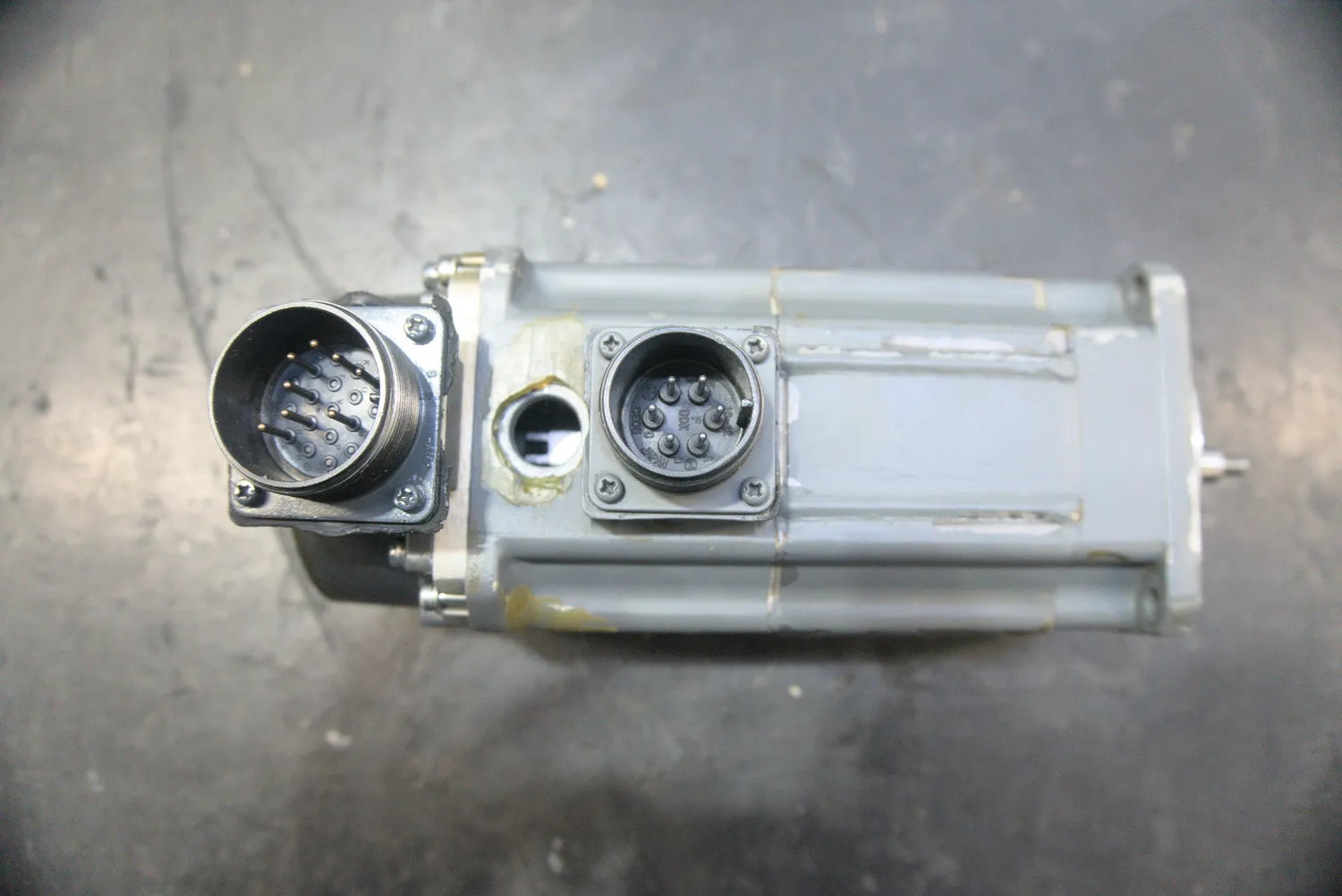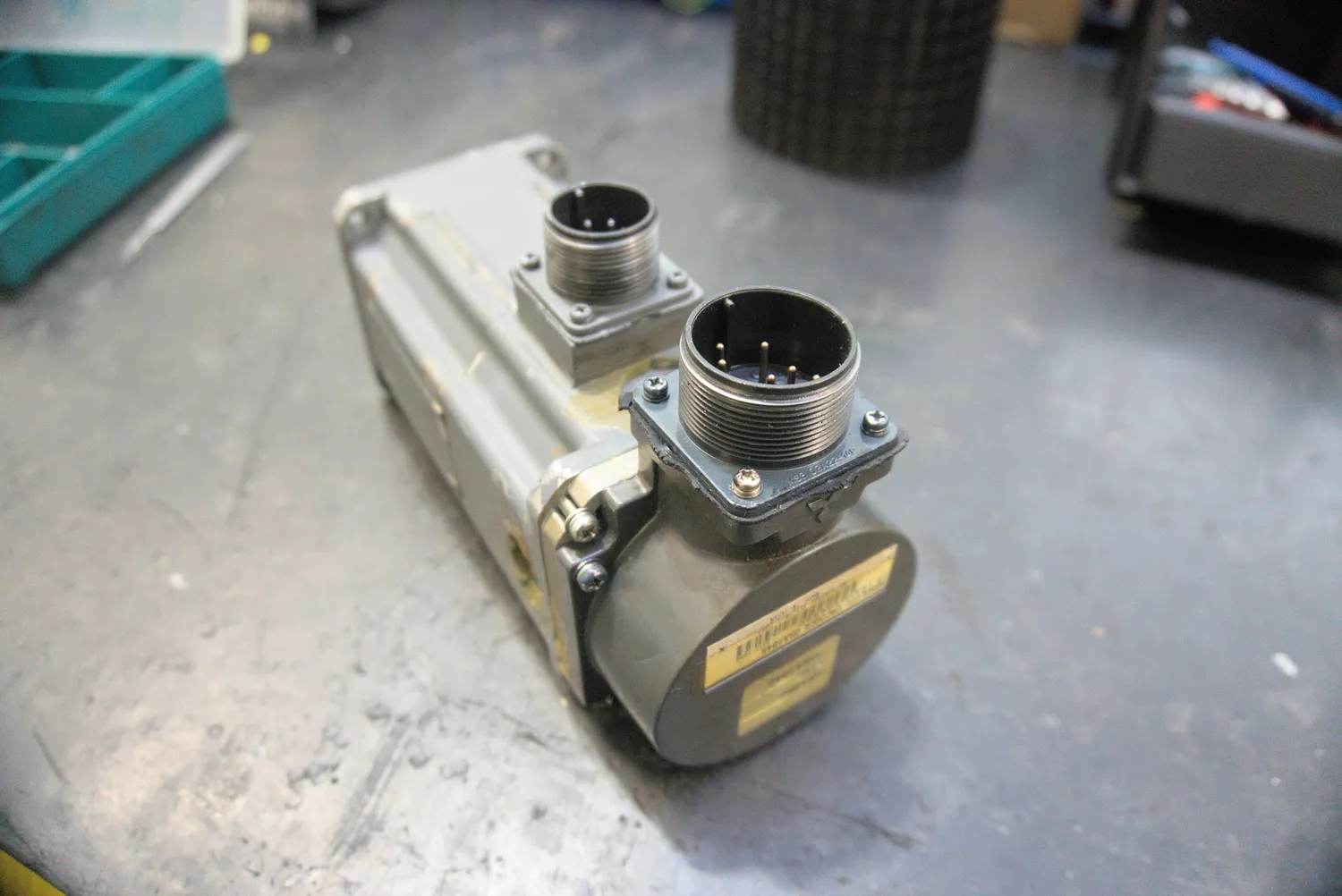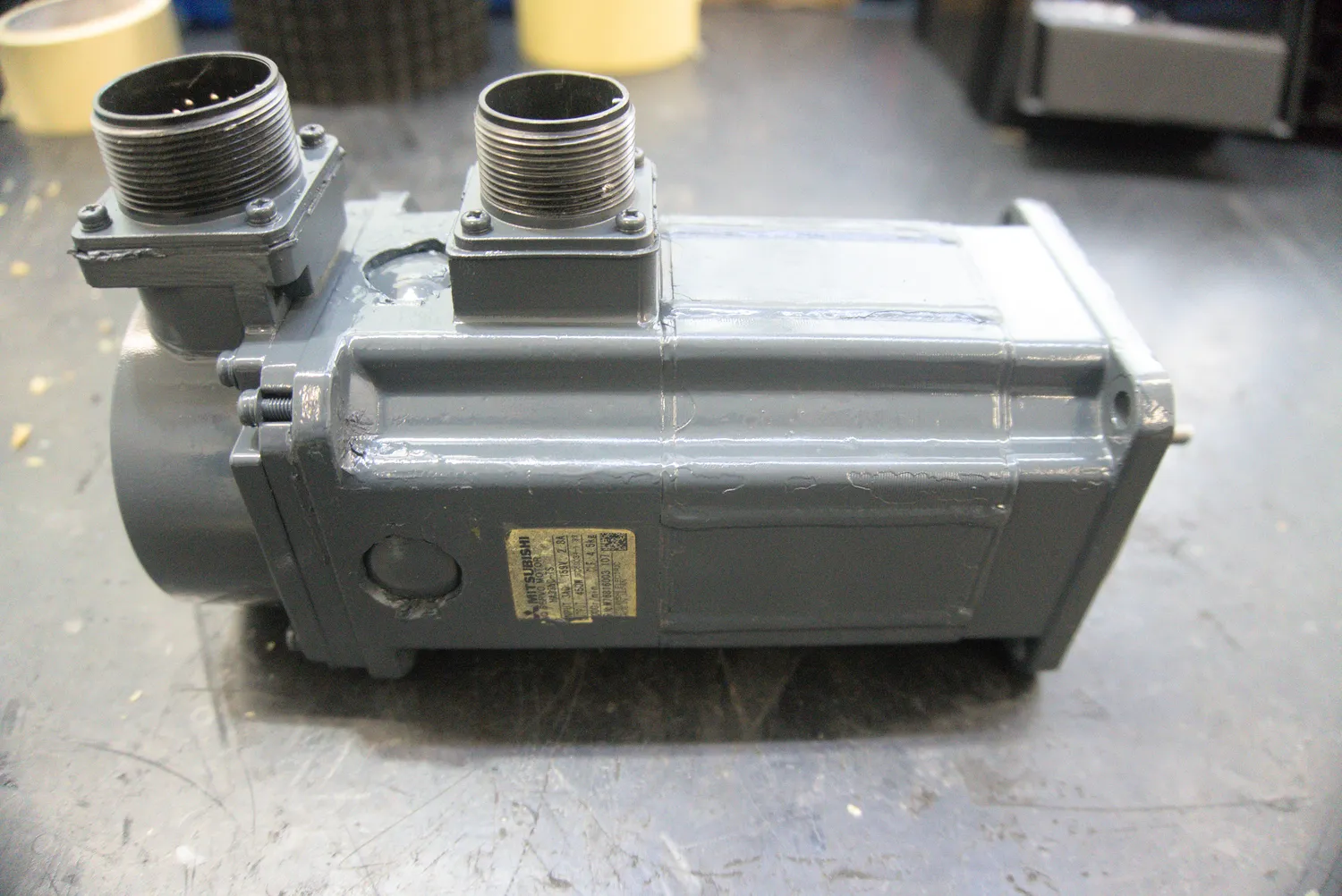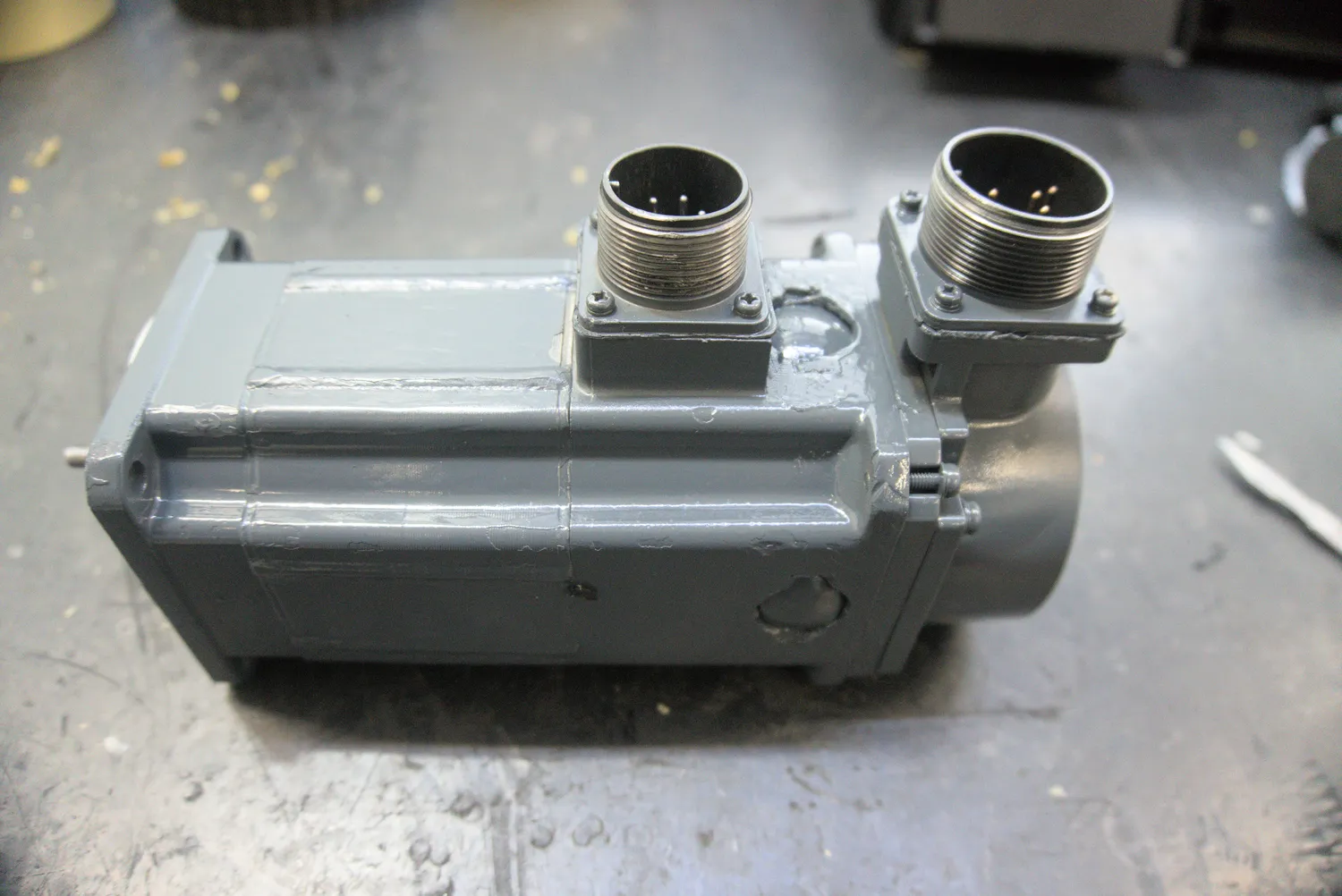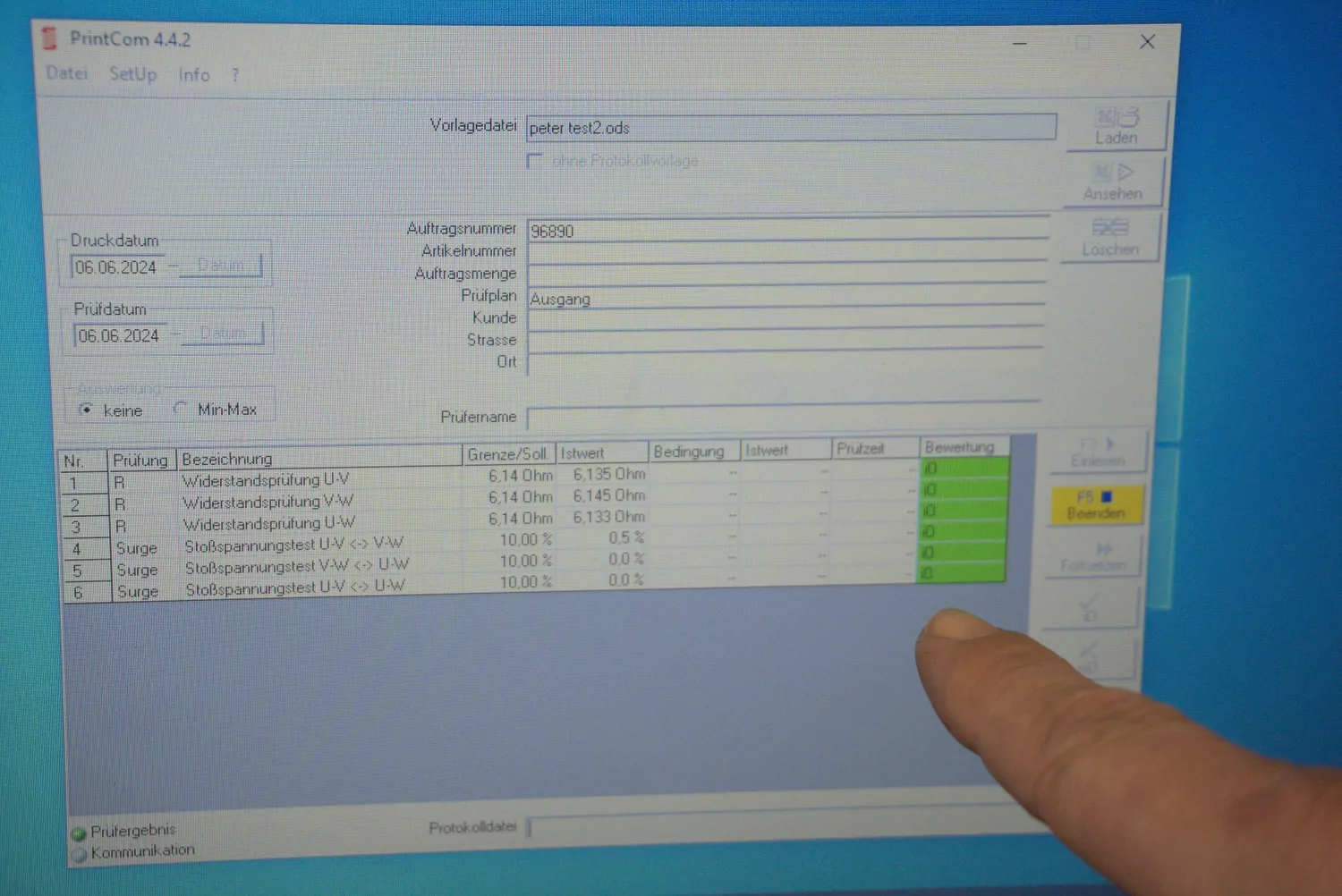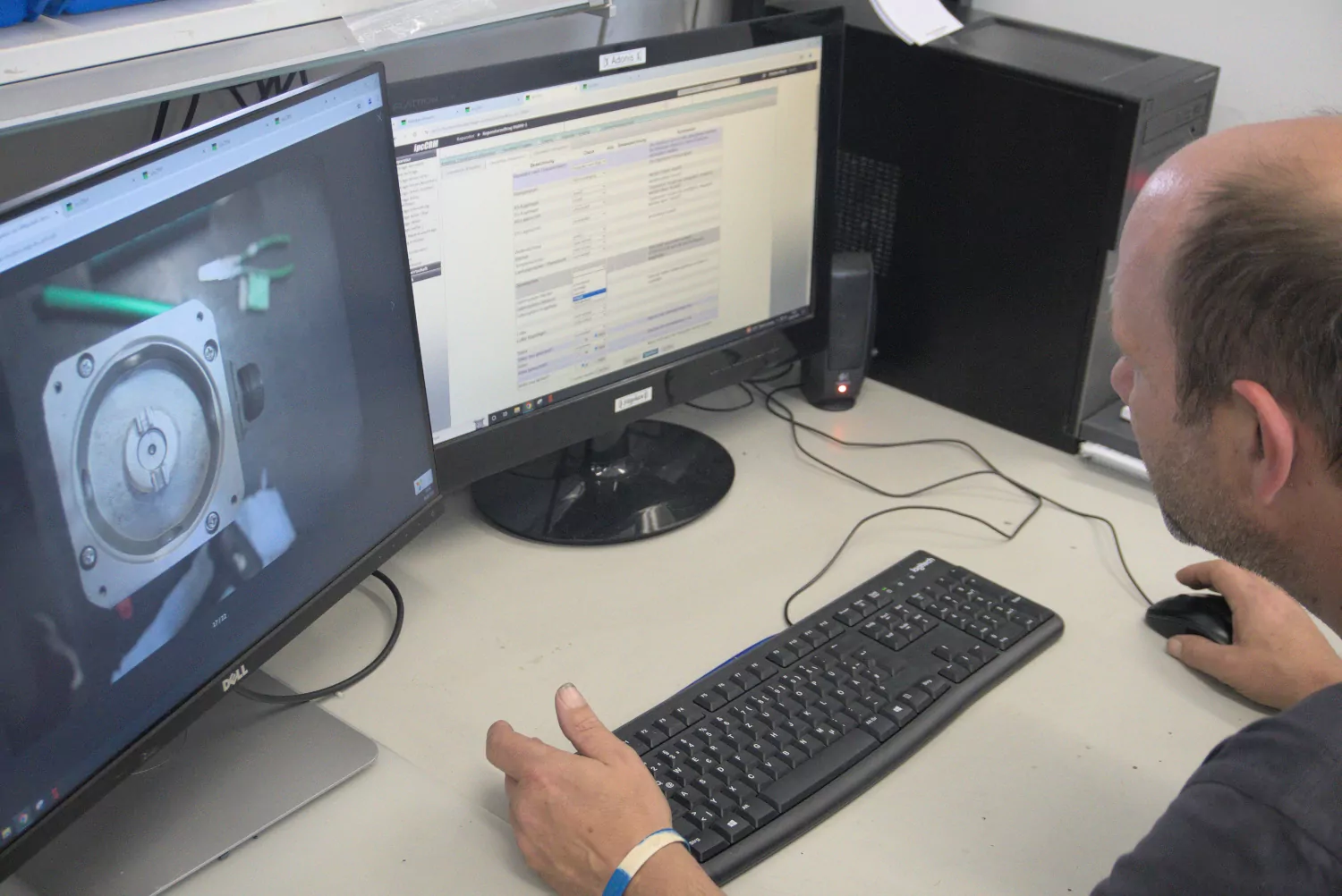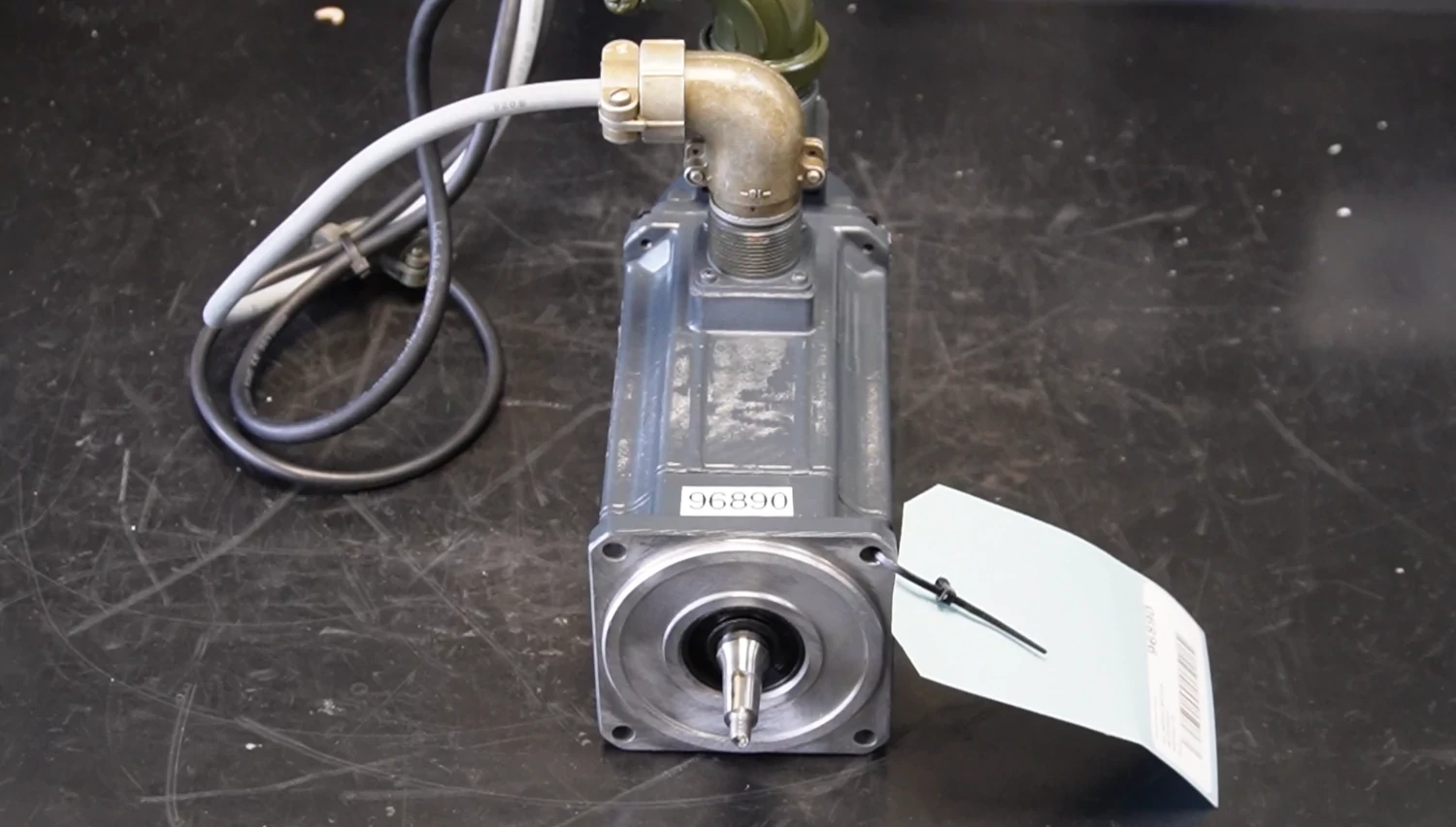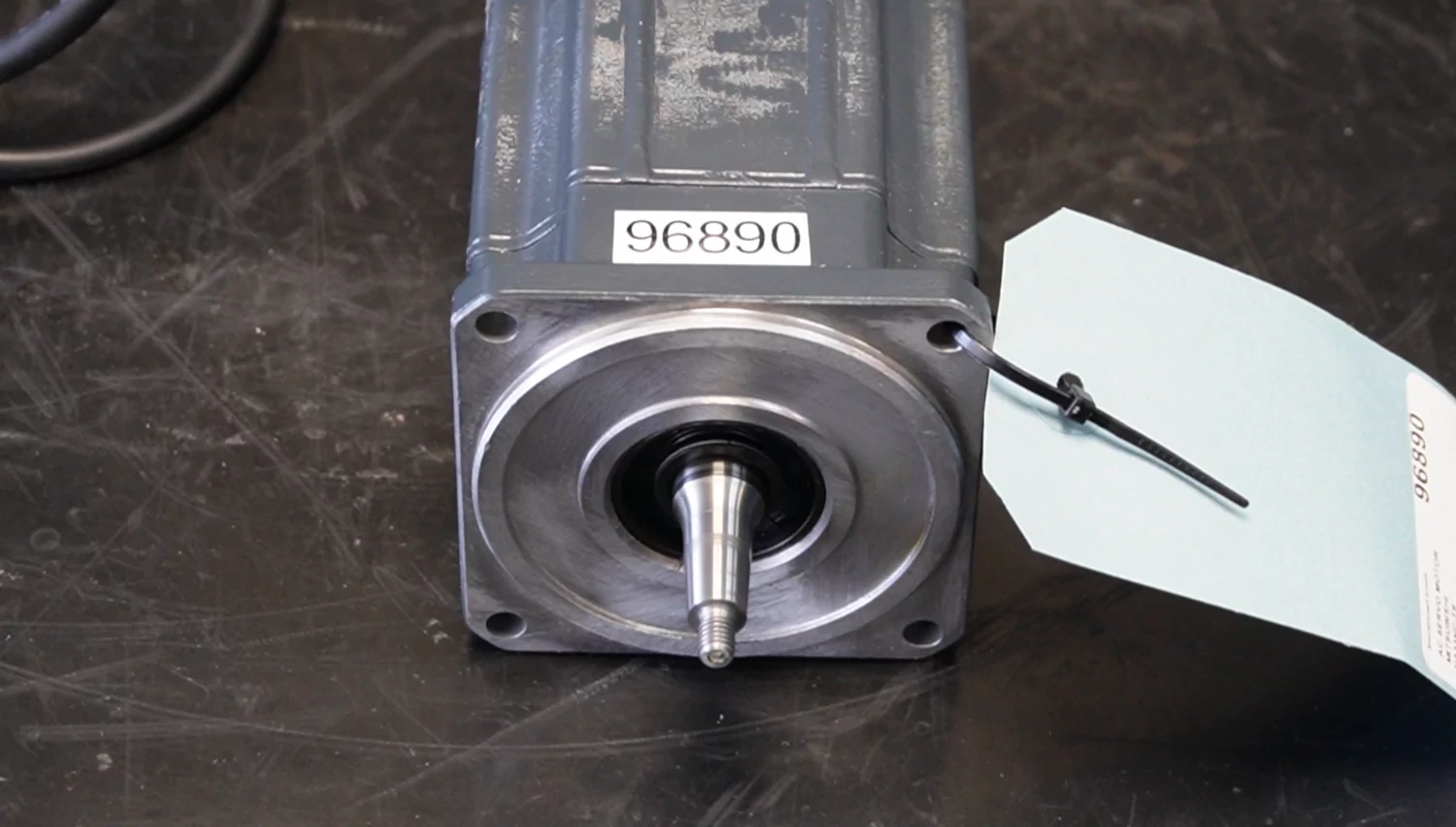- Home
- Mitsubishi
- AC Servo Motor
- HA33NCB-TSD5






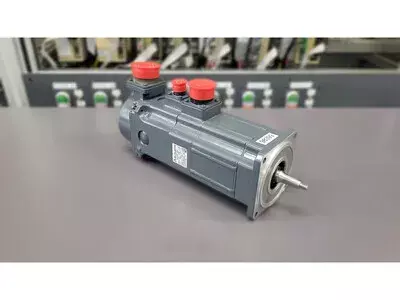
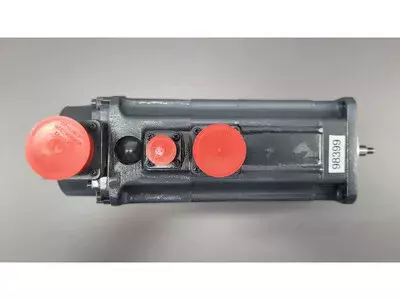
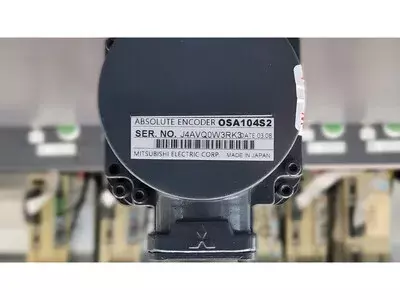
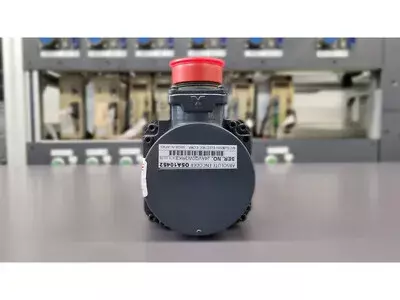
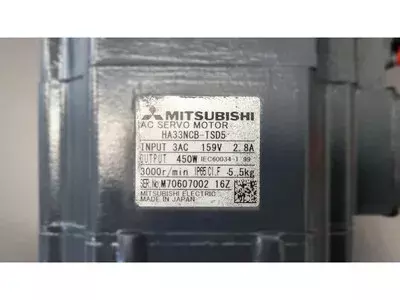

Repair for Mitsubishi HA33NCB-TSD5
AC Servo Motor
ID: 41165
| Buy | Not available |
| Repair | from € 600.00 |
| Exchange | Not available |
Technical Datasheet (*)
| Brand | Mitsubishi |
|---|---|
| Type | AC Servo Motor |
| Model | HA33NCB-TSD5 |
| Country Of Origin | MADE IN JAPAN |
| Current Draw | 2.8A |
| Phases | 3AC |
| Power | 450W |
| Protection Class | IP65 |
| Speed | 3000r/min |
| Voltage | 159V |
* Note: The provided datasheet values may differ from the actual device.
- Home
- Service
- Mitsubishi
- Servomotors HA-NC/FE/NCB Series
Mitsubishi Servomotors
In addition, we also offer services for Mitsubishi servomotors.
We specialize in the following motor series:
- HA (Example: HA103, HA203, HA303)
- HA-NC (Example: HA33NC-TD, HA43NC-TD5)
- HA-FE (Example: HA-FE13; HA-FE63)
- HA-NCB (Example: HA43NCB-S, HA80NCB-SS)
Our repair process is preventive and includes a series of steps that contribute to ensuring high repair quality.
Error Analysis and Localization
What can you do?
Errors in Servomotors
Possible solutions and notes
- Replace the motor on a trial basis.
- Check cable connections.
- Remove the motor from the shaft or belt and test at different speeds.
- Check or replace the drive.
- Perform an insulation test on the motor.
- Visually inspect the motor.
- Visually inspect the encoder area for dirt, optionally have it cleaned by a specialized company.
- Check encoder signals: For older motors with analog encoders, read the sine diagrams with an oscilloscope.
For serial encoders, also check the operating voltages.
If these measures do not help, the error is usually due to a faulty encoder or worn-out ball bearings.
Further error messages can be found in the alarm list available for download at the end of the form.
Possible solutions and notes
- Remove the motor from the shaft or belt and test at different speeds.
- Disconnect the motor connection cable and completely free the motor from loads. Then turn it by hand.
If the motor is still stiff or makes unusual noises, the ball bearings may be defective. - Check the motor for insulation and windings for short circuits.
- Check the encoder.
Further error messages can be found in the alarm list available for download at the end of the form.
Possible solutions and notes
- Visually inspect the encoder area for dirt, have it cleaned by a specialized company if necessary.
- Check encoder signals: For older motors with analog encoders, read the sine diagrams with an oscilloscope.
For serial encoders, also check the operating voltages. - Have the encoder replaced
Further error messages can be found in the alarm list available for download at the end of the form.
Possible solutions and notes
- Replace the motor on a trial basis.
- Check cable connections.
- Remove the motor from the shaft or belt and test at different speeds.
- Check or replace the drive.
- Perform an insulation test on the motor.
- Visually inspect the motor.
- Visually inspect the encoder area for dirt, optionally have it cleaned by a specialized company.
- Check encoder signals: For older motors with analog encoders, read the sine diagrams with an oscilloscope.
For serial encoders, also check the operating voltages.
If these measures do not help, the error is usually due to a faulty encoder or worn-out ball bearings.
Further error messages can be found in the alarm list available for download at the end of the form.
Possible solutions and notes
- Remove the motor from the shaft or belt and test at different speeds.
- Disconnect the motor connection cable and completely free the motor from loads. Then turn it by hand.
If the motor is still stiff or makes unusual noises, the ball bearings may be defective. - Check the motor for insulation and windings for short circuits.
- Check the encoder.
Further error messages can be found in the alarm list available for download at the end of the form.
Possible solutions and notes
- Visually inspect the encoder area for dirt, have it cleaned by a specialized company if necessary.
- Check encoder signals: For older motors with analog encoders, read the sine diagrams with an oscilloscope.
For serial encoders, also check the operating voltages. - Have the encoder replaced
Further error messages can be found in the alarm list available for download at the end of the form.
Handling Parameters
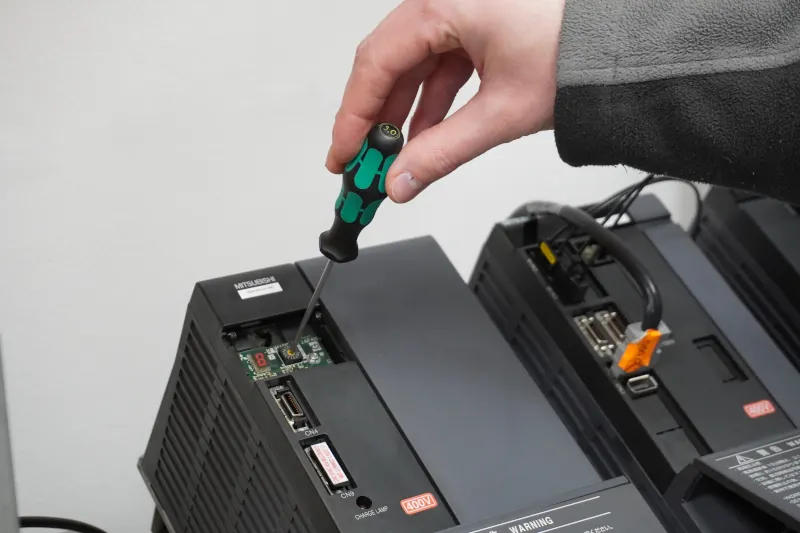
What to consider when parameterizing?
- In most cases, the motor parameters are stored in the drive or the controller.
- Obtain the appropriate documentation or software for setting the parameters.
The Typical Procedure for Repairing Mitsubishi Servo Motors
The repair process for servo motors includes the following steps:
- Preventive maintenance - replacing all necessary defective and worn parts. Renewing bearings and seals.
- Intensive cleaning, paint stripping, and degreasing.
- Repainting.
- Comprehensive final and long-term tests on our test benches followed by final adjustment.
- Completing documentation and checklists.
High-Quality Spare Parts for High-Quality Repairs
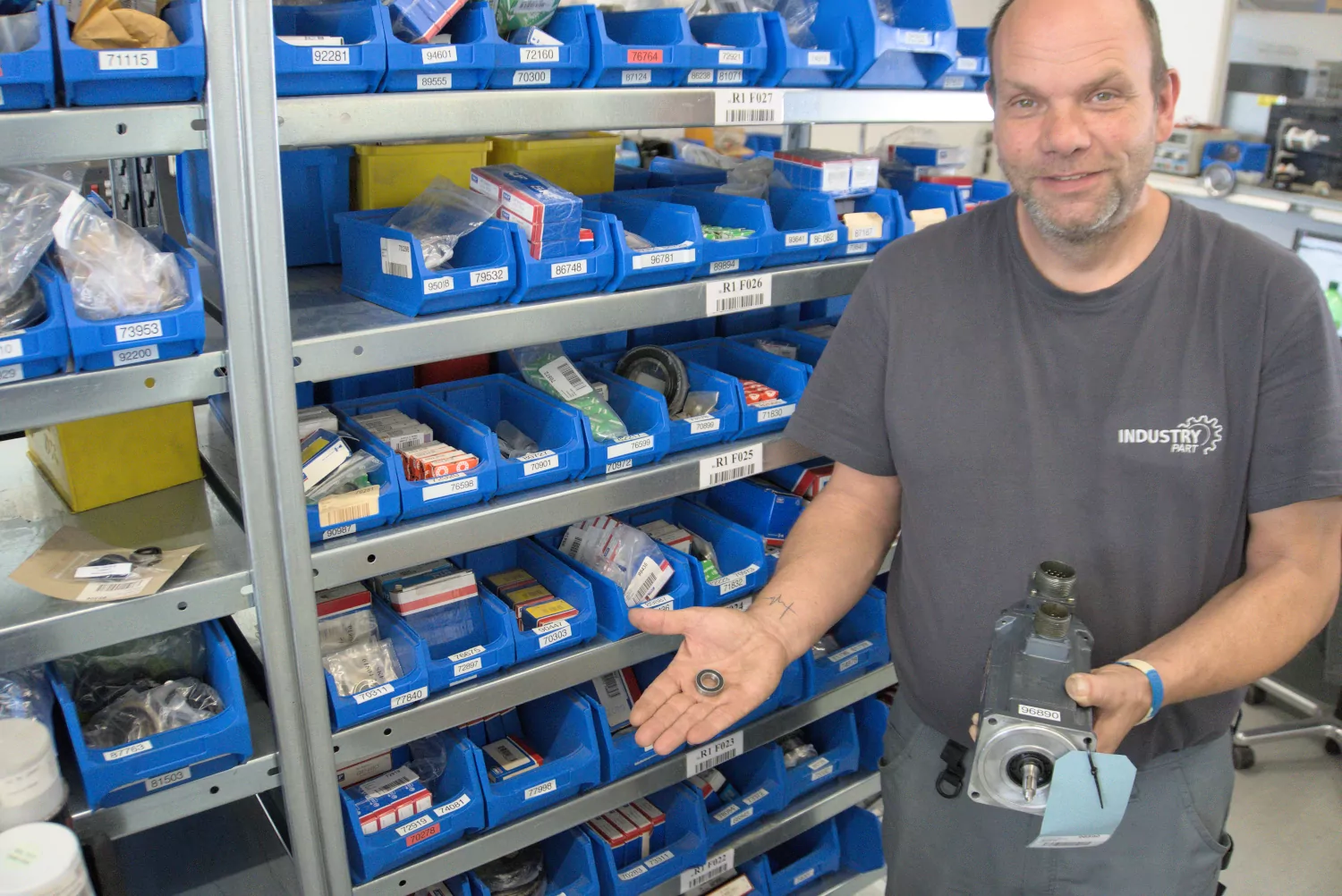
Thousands of spare parts in stock available to the technician. In addition to simply replacing operationally stressed components, refurbishing worn parts makes sense, as complex capital goods usually contain very valuable individual parts. Replacing them with new parts consumes valuable resources and incurs high costs.
For Mitsubishi servo motors, we replace
- Encoders
- Encoder cables
- Encoder connectors
- Resolvers
- Brakes
- Bearings
- Shaft seals
- O-rings
- Power cables
- Power connectors
Additionally, we proactively replace certain components that have proven to be prone to recurrent defects.
To prevent shortages and product discontinuations, we monitor our inventory levels using process-oriented software solutions. We order some parts in advance and secure ourselves for up to a year with sufficient spare parts for series repairs.
Quality and Level of Repair
The test is conducted on a state-of-the-art test bench that almost completely replicates the workflows of a real machining machine with Mitsubishi control.
Tested are:
- Encoder connection
- Alarm states
- Speed
- Current and voltage consumption
- Temperature
- Vibration
- Noise level
We Continuously Expand Our Repair Portfolio with New Series

As drive and power electronics are often phased out early, supply bottlenecks occur and you may be under pressure to provide your customers with replacements in a timely manner. We support you in analyzing bottlenecks and working together on optimal solutions.
The typical procedure includes:
- Development of test benches and procedures.
- Organization of spare parts.
- Preventive repairs at the component level.
- If necessary, new development or re-engineering of modules or complete devices.
You can contact us in the following way:
Chat with our customer support, write us a message: info@industrypart.com or call us: +49 6251 9888430

